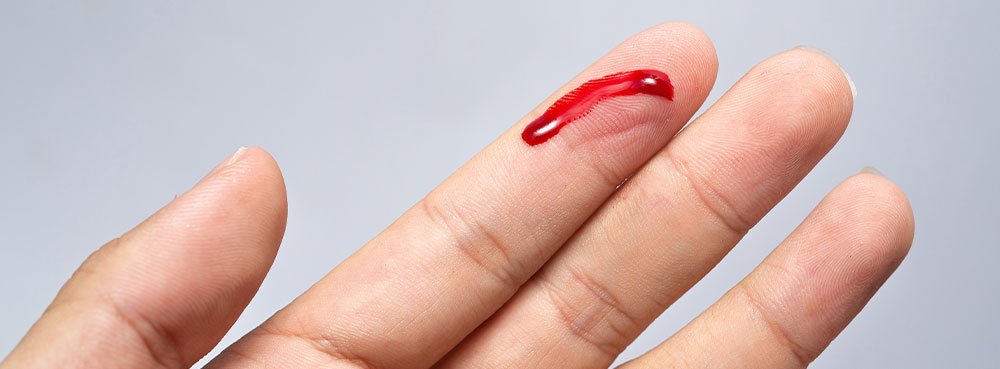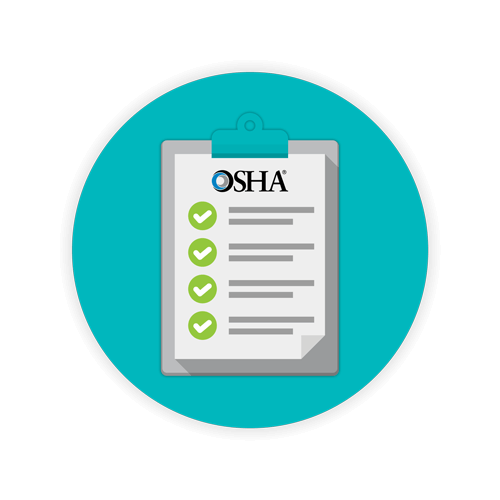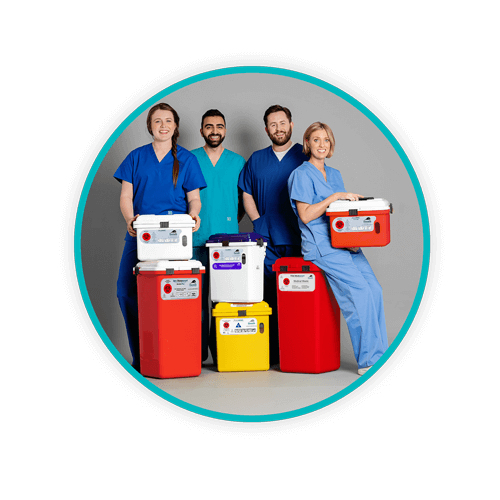Sharps Injuries: What To Do if You’re Stuck

Needlestick injuries are no joke. A needlestick injury can increase the risk of exposure to a variety of dangerous and highly infectious pathogens, so it’s important to know what to do if you’re stuck.
Even in the best of circumstances and in situations where professionals do their best to prevent a needlestick injury, they can and do happen. According to statistics compiled by the Centers for Disease Control and Prevention (CDC), disposable syringes, followed by suture needles are the most common devices involved with needlestick or sharps injuries.
Unfortunately, studies completed during the height of the COVID-19 pandemic uncovered a worrying rise in needlestick injuries likely due to an increase in strain and fatigue thanks to the stresses of the pandemic. With that in mind, it’s important to have an understanding of what steps to take if you are stuck.
TOPICS WE WILL COVER:
1 / Heightened awareness reduces needlestick injuries
2 / Immediate steps to take with a needlestick injury
3 / Documenting a needlestick injury
4 / Daniels Health promotes needlestick prevention
Heightened awareness reduces needlestick injuries
While accidents can and do happen, one of the best ways to avoid needlestick injuries in the first place is through proper training and awareness. One study suggests that heightened awareness regarding compliance in sharps disposal contributes to improvement in healthcare safety. The study found that with appropriate training and educational posters in place, the percent of overfilled and non-compliant sharps containers dropped significantly.
However, despite these types of improvements, it is estimated that over 300,000 healthcare professionals are injured in needlestick or sharps-related injuries every year. Depending on scenario and the type of exposure, it is important for all healthcare professionals to know what to do if you’re stuck.
Immediate steps to take with a needlestick injury
According to the National Institute for Occupational Safety and Health (NIOSH), the following steps are to be taken immediately following a needlestick injury or potential exposure to the blood or body fluid of a patient. The steps depend on the area and type of exposure:
-
Wash the needlestick area with soap and water

- Irrigate eyes thoroughly with saline, clean water and flush thoroughly
-
Flush areas of the nose, mouth, or exposure to skin with water
After that, immediately report the incident to supervisors. Some healthcare professionals put off immediate reporting due to being busy or downplaying the situation. Some neglect immediate reporting due to embarrassment or fear. However, it is vital to seek medical guidance and treatment for possible exposure to HIV, hepatitis B, hepatitis C, or other contamination. Post-exposure prophylaxis and management is a must. This protects not only the injured healthcare professional, but others from potential exposure.
It’s important to be aware of and follow facility procedures for reporting exposures, but don’t wait to get tested or to start prophylactic treatment.
In cases of possible exposure to hepatitis B or C, the professional injured by a needlestick injury will be tested and vaccinated. Vaccination might not be mandatory but is highly recommended and encouraged. It is also recommended that such individuals complete post-vaccination testing.
Following a possible exposure to hepatitis C (HCV), the healthcare personnel should be tested within 48 hours of exposure. Follow-up testing continues at three and six weeks post exposure.
In cases of potential exposure to HIV, post-exposure prophylaxis through the use of antiretroviral drugs following a single high-risk event to halt seroconversion is highly recommended and must be started within 72 hours of the incident.
Follow-up appointments and processes also include up to six months of follow-up testing, drug toxicity monitoring, and counseling. Such counseling may be recommended to reduce stress, fear, and uncertainty for the injured party.
Documenting a needlestick injury
Documentation of needlestick injuries also ensures compliance with the Occupational Safety and Health Administration (OSHA). Needlestick injuries are to be recorded under Standard 1904.8 (Record keeping forms and recording criteria for needlestick and sharps injuries).
The basic requirement states “You must record all work related needlestick injuries and cuts from sharp objects that are contaminated with another person’s blood or other potentially infectious material (as defined by 29 CFR 1910.1030). You must enter the case on the OSHA 300 log as an injury. To protect the employee’s privacy, you may not enter the employee’s name on the OSHA 300 log (see the requirements for privacy cases in paragraphs 1904.29(b)(6) 31904.29(b)(9)).”
Be aware that this requirement implies documentation only if the incident is work-related and involves contaminants or contamination with another person’s blood or “other potentially infectious material” (OPIM).
Also be aware that if an employee is diagnosed at a later point in time with an infectious bloodborne disease, the OSHA 300 log is to be updated with the classification of the case in the event of job transfer, restricted work, days away from work, or death. The log must also be updated to include the description of the infectious disease as well as changing the classification from an injury to an illness.
Other specifications are applicable for recording potential exposure to bloodborne pathogens and can be found here.
Daniels Health promotes needlestick prevention processes
Daniels Health is devoted to not only providing medical waste management services to healthcare providers throughout the country, but in products and processes that enhance the safety of healthcare professionals, especially in regard to needlestick and sharps injuries. Compliance is key. For additional information on our products and services that help to reduce needlestick injuries, contact one of our knowledgeable representatives today.
